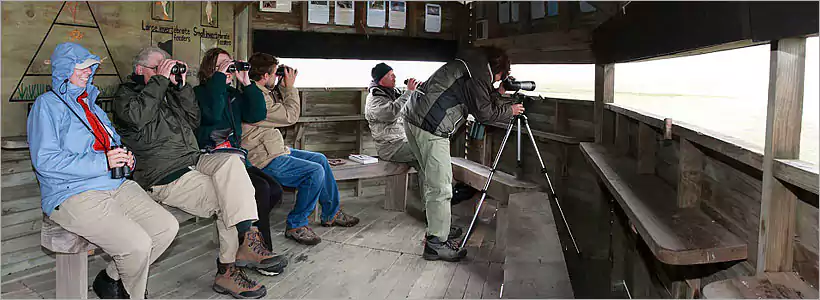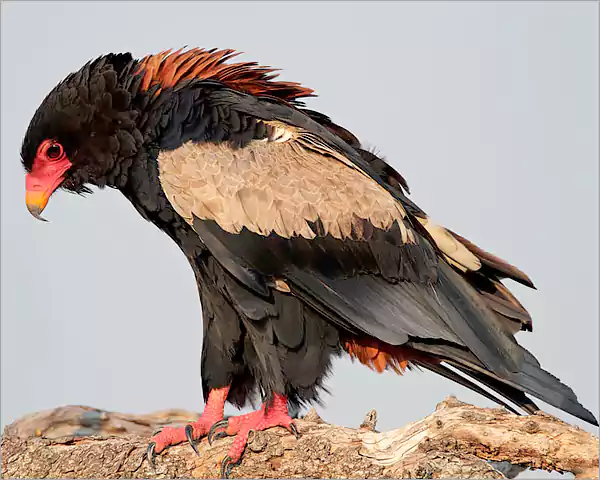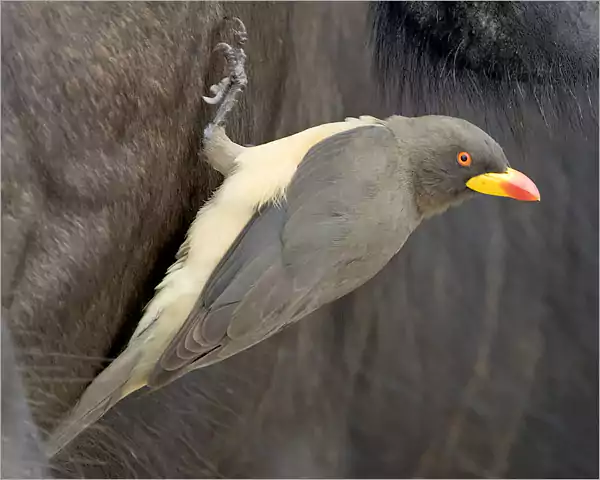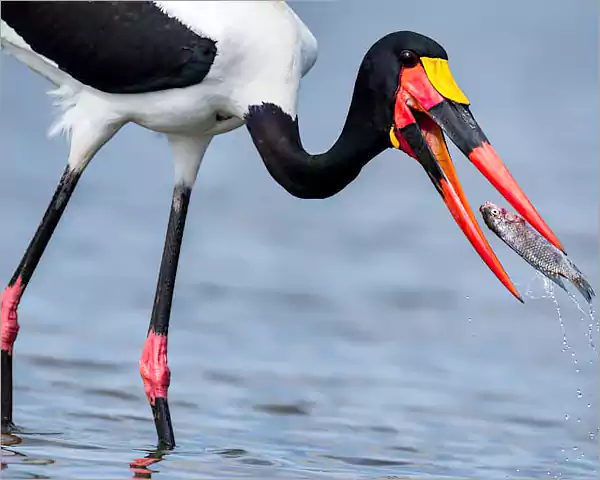Birding in the Kruger Park

Birding in Kruger Park
Birding - in Kruger Park
Late summer (January and February) is an excellent time for birding in Kruger, compensating for the poor wildlife visibility at this time of the year. Kruger attracts a diversity of birds because it straddles so many eco-zones.
The most rewarding birding in Kruger National Park experiences are probably on the guided wilderness walking trails.
Among the more prominent raptors are the Bateleur Eagle, Brown Snake Eagle, African Fish Eagle and Tawny Eagle. Colourful species include Lilac Breasted Rollers, Bee-Eaters, Kingfishers, Weavers and Starlings.
Water birds abound along river banks and waterholes, while the grey louries and hornbills are a common sight in the bush. Essential equipment is a pair of good binoculars (7 x 35 and 8 x 48 are good).
Kruger has a list of over 500 species, some of which are not to be found elsewhere in South Africa. Hornbills, Starlings, Vultures, Rollers, Bee-eaters and Shrikes typify the ubiquitous avi-fauna and birders can look forward to pursuing the big 6 (Saddle-billed Stork, Kori Bustard, Martial Eagle, Lappet-faced Vulture, Pel's Fishing-Owl and Ground Hornbill).
Best Birding Kruger Park
The far north of the park (Pafuri and Punda Maria regions) is regarded as one of the birding Mecca's of the country (with many regional rarities to be found), yet birding throughout the entire park is excellent. Eagles are common: Bateleur, Martial, Black-chested Snake, Brown Snake, African Hawk, African Fish and Tawny are all regularly seen, and in summer: Wahlberg's, Steppe, Lesser Spotted. The Park's numerous water points make for excellent birding, while the rest camps and picnic sites are exceptionally rewarding for birders.
 Bateleur Eagle - Rare Birds, Kruger Park
Bateleur Eagle - Rare Birds, Kruger Park
Kruger's sheer size and diversity of habitats have given sanctuary to bird species that may otherwise have disappeared from southern Africa. In particular, the alarming decline in numbers of the Yellow-billed Oxpecker, Secretarybird and Southern Ground-Hornbill appears to have been halted and Kruger populations of these species appear sustainable.
Kruger has been a haven for the scavenging raptors, habitat-specific species such as Arnot's Chat and rare migrants like the Pallid Harrier. Many globally-threatened species can be seen here, including the Saddle-billed Stork, often seen along Kruger's watercourses, but rarely seen outside the Park.
According to the Avian Demography Unit's "Important Birding Sites of South Africa", Kruger has several red data species - birds whose populations are vulnerable to extinction. By definition, they are uncommon or rare, although there may be healthy populations within Kruger because of its pristine condition. These include the Bateleur and Southern Ground-Hornbill mentioned above, as well as the Lappet-faced Vulture, Martial Eagle, Kori Bustard and Grey-headed Parrot.
Kruger's vast tracts of wide, open grassland have been the saving grace for South Africa's scavenging raptors, particularly for vultures and the endangered Bateleur. However, indiscriminate poisoning by farmers during the early 20th century almost drove these birds to extinction as they became victim to attempts by farmers to bait jackals, hyaenas and other livestock predators through poisoned carcasses.As recently as 100 years ago, the Bateleur was often seen as far south as the eastern Cape, where to this day it still occupies a potent place in Xhosa folk mythology.
Best Birding Kruger Park
The Avian Demography Unit believes the tide has turned and that scavenging raptors are making a come-back in southern Africa. Greater environmental awareness amongst farmers has led to more sophisticated forms of stock loss control, and the conversion of land from agriculture to game reserves has led to these large birds beginning to make a re-appearance outside Kruger.
 Yellow-billed Oxpecker - Rare Birds, Kruger Park
Yellow-billed Oxpecker - Rare Birds, Kruger Park
However, many endangered species remain under threat because of their use in traditional African medicine. This is particularly true for vultures. The Vulture Study Group cautions against the perception that Kruger's vulnerable species are beyond danger, saying the prospect of extinction for some species remains real.
Kruger Birds Rare Elsewhere in South Africa
- Bateleur
- Martial Eagle
- Tawny Eagle
- Lappet-faced Vulture
- White-backed Vulture
- White-headed Vulture
- Hooded Vulture
- Pel's Fishing-Owl
- Kori Bustard
- Stierling's Wren-Warbler
- Southern Ground-Hornbill
- African Finfoot
- Saddle-billed Stork
- Yellow-billed Oxpecker
- Brown-headed Parrot
- Thick-billed Cuckoo
- Senegal Lapwing
- Thrush Nightingale
Kruger National Park’s Big 6 Birds are a fanciful grouping aimed at mirroring what the traditional big 5 mammals do for public eagerness to spot species.
Where the big 5 represent the 5 game species that were most desired as hunter’s trophies in times gone past and now represent the 5 species that visitors to Kruger (or other classic African savannah parks) most want to see, the big 6 represent a subjective grouping of the 6 most desired birds that visitors to Kruger want to see. It is aimed at the layman birder, and hence the species are easy to identify and instantly recognizable. The species are also by and large restricted to Kruger and other conservation areas, as human encroachment; habitat degradation etc. has reduced their ranges.
Five of the six are seen relatively easily in the park and are found throughout the park i.e. Lappet faced Vulture, Martial Eagle; Saddle billed Stork, Kori Bustard and Ground Hornbill. The one curve ball is the Pel’s Fishing Owl, which is seldom seen, because of its nocturnal habits and restriction to large watercourses. There are however populations along the Limpopo, Levuvhu and Olifants Rivers. They are recorded less frequently along the Letaba, Shingwedzi and Sabie Rivers or from dams in the area. The best way to see them is to go on either the Nyalaland or Olifants Wilderness Trails, or do night drives from Olifants rest camp. Balule camp is also a potential place to see them, as is driving in the Pafuri region along the Levuvhu and being lucky enough to find one at roost.
Finding Rare Birds - Kruger Park
Interestingly, it is estimated that there are only between 25 and 30 breeding pairs of Saddle-bills in the park, plus a handful of non-breeding individuals. However, because they are so large and striking in appearance and are very prominent along major water points, visitors regularly see them. But these numbers make them far rarer and more threatened than animals such as cheetah and wild dog, not to mention the big 5. (See Birding Photographs for images).
 Saddle-Billed Stork - Rare birds Kruger Park
Saddle-Billed Stork - Rare birds Kruger Park
Derek Engelbrecht is busy compiling an updated distribution and breeding "atlas" of the Big 6 in the Limpopo Province. This forms part of a long-term research and monitoring project on the Big 6 in the Limpopo Province. As a matter of interest, annual surveys of Southern Ground Hornbills in the Limpopo Province outside the Kruger National Park since 2004 have indicated that there are considerably fewer individuals and groups outside than was generally thought. As far as could be established, there is not a single breeding record of a Lappet-faced Vulture in the Limpopo Province outside the Kruger National Park since the 1960's.
The fist objective is to find out where these birds are, where they breed and if there had been any range expansions/ reductions in recent years. I kindly request anyone with information on the whereabouts and "breed-abouts" of these species to drop me a note on Derek Engelbrecht and I will then get in contact with you to get the necessary information.
